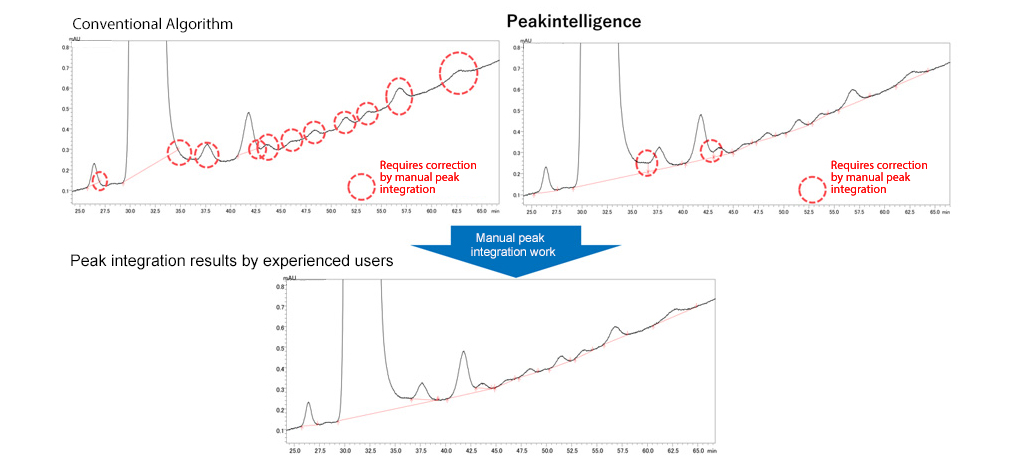Peakintelligence™ for LC - Особенности
Peak Integration Software for LabSolutions
Parameter-Free Peak Integration

The AI was trained with examples of peak integration by experienced users, eliminating the need to adjust parameters. The AI assists with the detection of chromatogram peaks and provides data analysis on par with that of an experienced user. Further, incorrect peak detection results can be minimized and even small peaks can be detected correctly.
Achieves High-quality Peak Integration Results, The Same as Experienced users

Peakintelligence for LC enables peak integration on par with that of an experienced user without configuring/adjusting parameter settings, which prevents human errors and arbitrary changes to data
Reducing Manual Peak Integration Work

Analyzing complex samples with multiple target components involves analyzing a mixture of various large and small peaks from the principal components and impurities contained in samples. Due to the difficulty of adjusting peak integration parameter settings, peak integration results for peaks that were not detected correctly must be corrected manually, which is extremely time-consuming. Consequently, quantitative results depend on the skill levels of specific personnel. However, by using Peakintelligence for LC software, incorrect peak detection results can be minimized and even small peaks can be detected correctly without configuring parameter settings. That means anyone can obtain peak integration on par with experienced users, which ensures that reliable quantitative processing can be achieved without depending on specific personnel.
Shortens Manual Peak Integration Time

In the quantitative processing workflow, automatic peak integration results are visually checked and any incorrect results are corrected by manual peak integration.
Compared to the conventional algorithm, using Peakintelligence for LC can reduce the number of compound peaks that need to be corrected in peak integration results, which can shorten the time required for manual peak integration by about 75% (assuming test data from about 45 samples that contain about 500 peaks).


